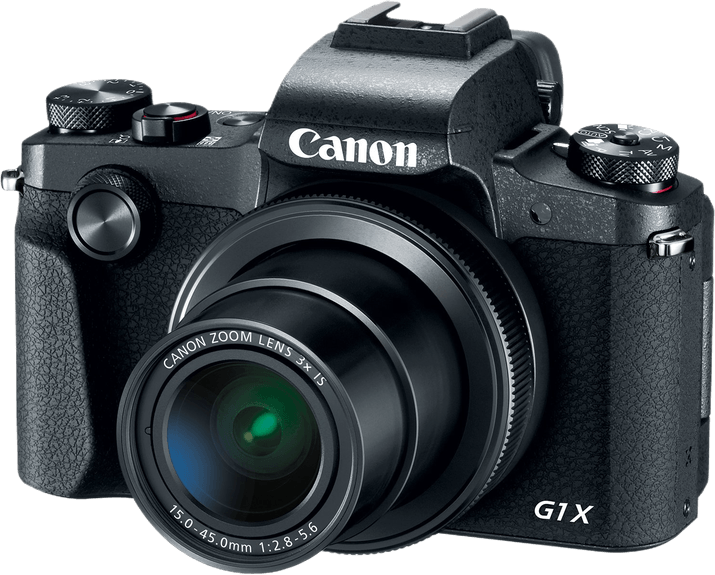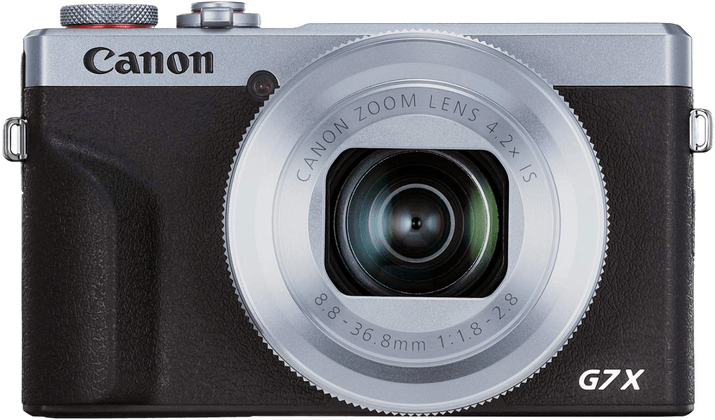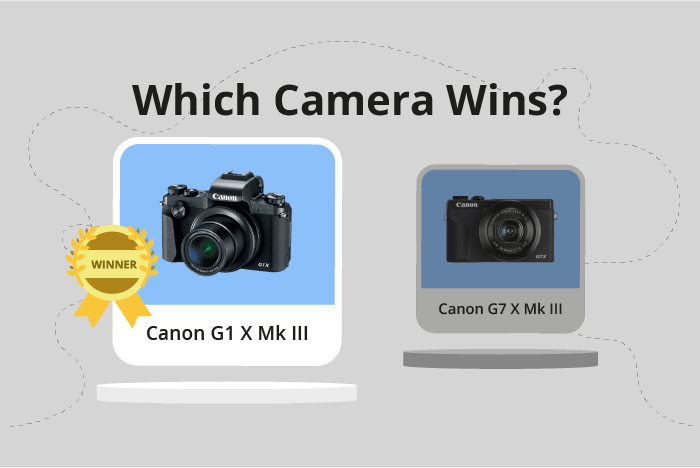Canon PowerShot G1 X Mark III vs PowerShot G7 X Mark III Comparison
Canon PowerShot G1 X Mark III

Canon PowerShot G7 X Mark III

The Canon PowerShot G1 X Mark III edges out the Canon PowerShot G7 X Mark III with a score of 62/100 compared to 59/100. Both cameras share similarities such as being released in the same decade, the G1 X Mark III in 2016 and the G7 X Mark III in 2019. They also have the same manufacturer, Canon.
The G1 X Mark III outperforms its counterpart with its larger size (138 x 102 x 135mm) and heavier weight (915g), providing a more robust and stable feel. On the other hand, the G7 X Mark III is more compact (105 x 61 x 41mm) and lightweight (304g), making it easier to carry and handle.
Price-wise, the G7 X Mark III is more affordable at $749 compared to the G1 X Mark III’s $1120 launch price. Ultimately, the G1 X Mark III offers a sturdier build, while the G7 X Mark III is a more budget-friendly and portable option.
Canon PowerShot G1 X Mark III vs PowerShot G7 X Mark III Overview and Optics
The Canon PowerShot G1 X Mark III outperforms the Canon PowerShot G7 X Mark III in optics with a score of 63/100 compared to 57/100. Both cameras share several specifications, including 20 megapixels, CMOS sensor type, 1″ sensor size, fixed lens mount, and image stabilization.
The G1 X Mark III’s superiority in optics is due to its better sensor performance, as evidenced by a higher DXOMARK score of 71 compared to the G7 X Mark III’s 58. The Venus Engine processor in the G1 X Mark III also contributes to its higher score. These factors result in better image quality and more accurate color reproduction.
On the other hand, the G7 X Mark III has a faster shooting speed of 30 compared to the G1 X Mark III’s 12. This makes the G7 X Mark III better suited for capturing fast-moving subjects and continuous shooting. Its Digic 8 processor also supports faster shooting speeds.
In terms of optics, the G1 X Mark III offers better image quality due to its higher DXOMARK score and Venus Engine processor. However, the G7 X Mark III has the advantage of faster shooting speeds, making it more suitable for action photography. Both cameras have similar specifications in other areas, such as megapixels, sensor size, and image stabilization. Based on these comparisons, the G1 X Mark III is the better choice for photographers prioritizing image quality, while the G7 X Mark III is more suitable for those who need fast shooting speeds.
Canon PowerShot G1 X Mark III vs PowerShot G7 X Mark III Video Performance
The Canon PowerShot G7 X Mark III emerges as the winner in terms of video capabilities, with a score of 91 out of 100, compared to the Canon PowerShot G1 X Mark III’s score of 83. Both cameras share some common specifications, such as 4K maximum video resolution and built-in time-lapse functionality.
The G7 X Mark III boasts a higher maximum video frame rate of 120fps, which is twice the frame rate of the G1 X Mark III at 60fps. This higher frame rate allows for smoother video playback and better slow-motion effects. Additionally, the G7 X Mark III’s max video dimensions are 3840 x 2160, which offers a slightly smaller resolution compared to the G1 X Mark III’s 4096 x 2160. However, this difference in resolution is negligible and does not significantly impact the video quality.
On the other hand, the G1 X Mark III’s advantage lies in its max video dimensions of 4096 x 2160, which is slightly larger than the G7 X Mark III’s 3840 x 2160. This provides a marginally higher resolution, but its lower frame rate of 60fps is a drawback compared to the G7 X Mark III’s 120fps.
Taking all factors into account, the Canon PowerShot G7 X Mark III is the superior choice for video capabilities due to its higher video score and significantly higher maximum video frame rate. While the Canon PowerShot G1 X Mark III offers a slightly larger video resolution, it falls short in other aspects, making the G7 X Mark III the better option for videography enthusiasts.
Canon PowerShot G1 X Mark III vs PowerShot G7 X Mark III Features and Benefits
The Canon PowerShot G1 X Mark III and the Canon PowerShot G7 X Mark III both have a feature score of 70/100, indicating that they share many similar specifications. They both have a screen size of 3 inches and a screen resolution of 1040000 dots. Each camera is equipped with a touchscreen, a flip screen, WIFI, and Bluetooth. Neither of them has GPS functionality.
The G1 X Mark III stands out due to its APS-C sensor, which allows for better image quality and improved low-light performance. This larger sensor provides a noticeable advantage over the G7 X Mark III, which has a smaller 1-inch sensor. The G1 X Mark III’s sensor makes it a better option for those who prioritize image quality and low-light capabilities.
On the other hand, the G7 X Mark III has an advantage in terms of its compact size and weight. It is lighter and smaller than the G1 X Mark III, making it a more convenient option for those who value portability and ease of use. Additionally, the G7 X Mark III has a faster continuous shooting speed, allowing users to capture fast-moving subjects more effectively.
In comparing these two cameras, the G1 X Mark III is the better choice for those who prioritize image quality and low-light performance, while the G7 X Mark III is more suitable for those who value portability and faster continuous shooting. Both cameras have an identical feature score, but their strengths lie in different areas, catering to different needs and preferences.
Canon PowerShot G1 X Mark III vs PowerShot G7 X Mark III Storage and Battery
The Canon PowerShot G7 X Mark III ranks higher with a storage and battery score of 27/100, while the Canon PowerShot G1 X Mark III scores 21/100. Both cameras have one memory card slot and accept SD, SDHC, and SDXC (UHS-I compatible) memory cards.
The G1 X Mark III outperforms the G7 X Mark III in battery life, offering 350 shots per charge, compared to the G7 X Mark III’s 235 shots. The G1 X Mark III uses a DMW-BLC12 battery type, providing longer shooting sessions.
On the other hand, the G7 X Mark III has the advantage of USB charging, making it more convenient for on-the-go charging. This feature is absent in the G1 X Mark III. Its battery type is NB-13L.
Considering these aspects, the G7 X Mark III excels in convenience, while the G1 X Mark III offers a longer battery life. Users should weigh their priorities when choosing between the two cameras.
Canon PowerShot G1 X Mark III vs PowerShot G7 X Mark III – Our Verdict
Are you still undecided about which camera is right for you? Have a look at these popular comparisons that feature the Canon PowerShot G1 X Mark III or the Canon PowerShot G7 X Mark III:
- Canon PowerShot G7 X Mark III vs Sony Cyber-shot DSC-RX100 VII
- Canon PowerShot G7 X Mark II vs PowerShot G7 X Mark III
- Canon PowerShot G5 X Mark II vs PowerShot G7 X Mark III
- Canon PowerShot G7 X Mark III vs Panasonic Lumix ZS200 (TZ200)
- Canon PowerShot G1 X Mark III vs Sony Cyber-shot DSC-RX100 VII
- Canon PowerShot G7 X Mark III vs Ricoh GR IIIx

